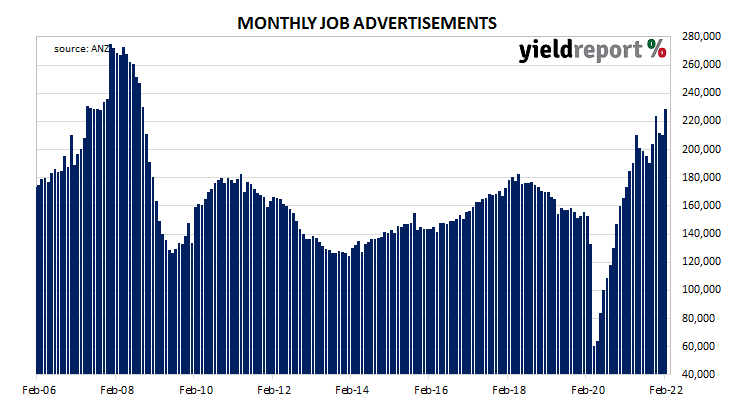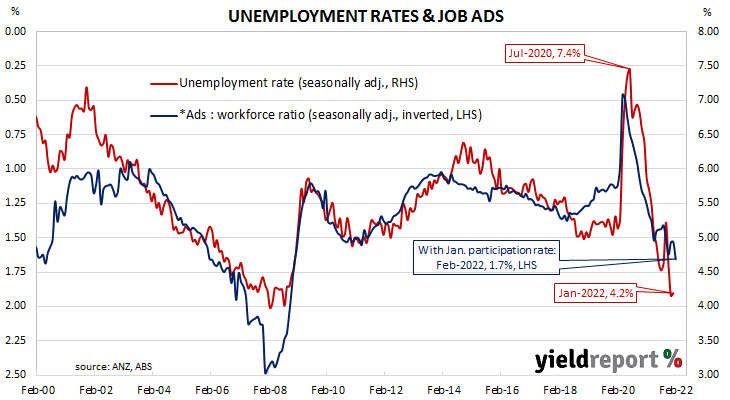Summary: Job ads up 8.7% in February; 31.9% higher than same month in 2021; labour demand growing, job-switching expected to rise; ANZ expects “low 3s” jobless rate later this year, underemployment rate to fall; ads-to-workforce ratio up at 1.7%.
From mid-2017 onwards, year-on-year growth rates in the total number of Australian job advertisements consistently exceeded 10%. That was until mid-2018 when the annual growth rate fell back markedly. 2019 was notable for its reduced employment advertising and this trend continued into the first quarter of 2020. Advertising plunged in April and May of 2020 as pandemic restrictions took effect but then recovered quite quickly.
According to the latest ANZ figures, total advertisements jumped by 8.4% in February on a seasonally-adjusted basis. The rise followed a 0.7% decline in January and a 5.4% fall in December after revisions. On a 12-month basis, total job advertisements were 31.6% higher than in February 2021, up from January’s revised figure of 27.3%.
“The February increase reinforces the view we expressed last month that job ads hadn’t yet peaked, with labour demand continuing to grow and job-switching expected to rise,” said ANZ senior economist Catherine Birch.
Long-term Commonwealth Government bond yields declined a little on the day, almost ignoring the heavy falls of US Treasury yields overnight. By the close of business, the 10-year ACGB yield had lost 2bps to 2.14% and the 20-year yield had slipped 1bp to 2.63%. The 3-year yield finished unchanged at 1.59%.
Birch said ANZ expects the jobless rate to fall to the “low 3s” later this year and for the underemployment rate to “fall further” even as Australia’s borders re-open. “New arrivals will also add to demand for goods and services, and consequently, demand for labour, in an already strong demand environment. As such, competition for labour is likely to remain elevated.”
The inverse relationship between job advertisements and the unemployment rate has been quite strong (see below chart), although ANZ themselves called the relationship between the two series into question in early 2019. A rising number of job advertisements as a proportion of the labour force is suggestive of lower unemployment rates in the near-future while a falling ratio suggests higher unemployment rates will follow.
In 2008/2009, advertisements plummeted and Australia’s unemployment rate jumped from 4% to nearly 6% over a period of 15 months. When a more dramatic fall in advertisements took place in April 2020, the unemployment rate responded much more quickly.



